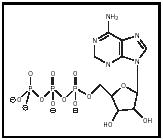Alexander Todd
BRITISH CHEMIST
1907–1997
Alexander R. Todd was born in Glasgow on October 2, 1907. His father was a businessman. Young Todd was educated at the Allan Glen School and Glasgow University. There he earned a B.S. and in 1928 left for the University of Frankfurt-am-Main, where he earned a Ph.D. in 1931 for his work on bile acids with W. Borsche. He returned to England that same year to study with Sir Robert Robinson; it was during this period that he completed very successful work on the colored materials of fruits, the anthocyanins. Todd journeyed home to Scotland in 1934 to join the staff of Edinburgh University. In 1938 he was appointed Sir Samuel Hall Professor of Chemistry and director of the Chemical Laboratories at the University of Manchester, posts he held until 1944. He then accepted a position as professor of organic chemistry at Cambridge University and became a fellow of Christ's College. He was named chancellor of the University of Strathclyde in 1975 and was a visiting professor at Hatfield Polytechnic until 1986.
The anthocyanin dyes that Todd researched while working with Robinson are important substances because they are part of the mechanism for protecting the plants' DNA from the deleterious effects of UV radiation during pollination and act as insect attractants during the pollination season. The structure for the red substance of cranberries is given in Figure 1.

While at Manchester, Todd began his work on nucleotides. These compounds are the structural units of the nucleic acids DNA and RNA . In 1949, while at Cambridge, he synthesized adenosine triphosphate (ATP; Figure 2) and later that same year flavin adenine dinucleotide (FAD). These nucleotides are the molecules that carry and transfer energy in virtually all living organisms. These discoveries are not only important in the elucidation of the energy transfer mechanisms, but they also set a precedent for the synthesis of nucleotides and the precursors of DNA and RNA. These accomplishments required the utmost skill in the art of organic synthesis because nucleotides are very difficult substances to prepare and characterize.

Todd also did significant work on the structure and synthesis of vitamin B 12 , vitamin E, and a number of alkaloids . The most noteworthy of these contributions was the elucidation of the structure of tetrahydrocannabinol (THC), the active component of marijuana.
Todd was named president of the Royal Academy in 1975. He was also a member of the National Academy of Sciences (USA), the American Academy of Arts and Sciences, and several prestigious European societies. Todd served as the chairman of the British government's advisory committee on scientific policy from 1952 until 1964. He was awarded the Nobel Prize in chemistry in 1957 for his work on nucleotides and nucleotide coenzyme studies. He was knighted in 1954 and died in 1997.
SEE ALSO Nucleotide .
Lawrence H. Brannigan
Bibliography
Moore, Ruth (1961). The Coil of Life. New York: Knopf.
Internet Resources
Nobel Foundation e -Museum. "The Nobel Prize in Chemistry, 1957." Available from http://www.nobel.se/chemistry/laureates/1957/ .
Comment about this article, ask questions, or add new information about this topic: